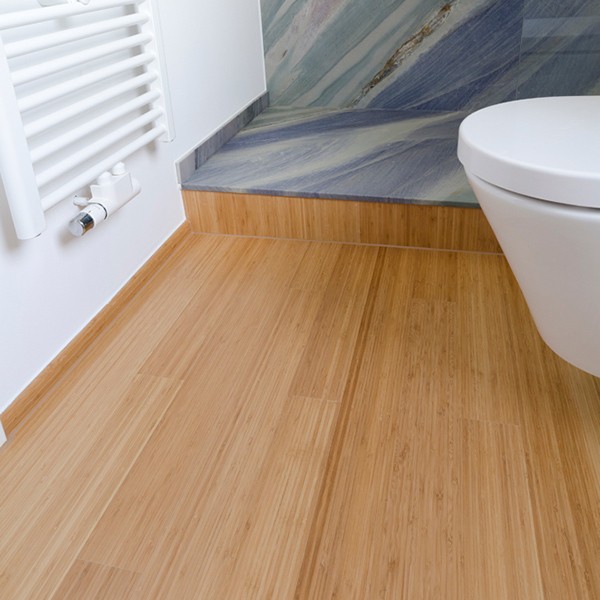Bamboo Parquet - The Sustainable Alternative of Hardwood Flooring
Dec 3, 2025, 9:20 AM
In recent years, the demand for bamboo parquet in India has increased significantly. This is a very positive development in view of the growing deforestation of (tropical) forests worldwide. Because bamboo is an almost inexhaustible resource due to its rapid growth and thus a particularly environmentally friendly alternative.
In addition, the raw material convinces the parquet floor lover above all by its extremely good properties. It takes just five years for a bamboo trunk to be cured enough to be "harvested". And with this harvest, not even the stock is decimated: when the individual rods are beaten, the plant does not die, but new stems grow again and again, since the roots are connected underground. This makes bamboo one of the most environmentally friendly raw materials in the world.
A grass with many advantages
But that's not the only reason bamboo has become fashionable as a floor covering in recent years. Because this wood (which is actually grass!) can be much more than "just" sustainable. It is one of the hardest types of wood and is in no way inferior to oak in terms of longevity. In addition, it is tensile, pressure- and bend-resistant and therefore extremely durable. What is particularly advantageous, however, is that bamboo hardly reacts to changes in humidity; it works very little with it – so hardly stretches, or pulls together. As a material, such as parquet, bamboo is therefore optimally suited and has therefore been used intensively in India for thousands of years.
Something for every taste
Especially in terms of appearance, bamboo parquet leaves little to be desired: Bamboo flooring is available as floor ingestion in various variants and surface optics. Due to the method of making bamboo parquet, namely by splitting the pipe lengthwise, compresses the resulting strips and then glued them together with a resin system, it is not only very robust. In addition, a bamboo flooring can also be dyed with special colour oils. From white to brown tones to black, almost all shades of colour can be realized.
Benefits of bamboo flooring:
• It is an ecological material, since its manufacturing process is sustainable and does not harm the environment. Since the raw material is a particular herb, it has a very short renewal cycle, that is, it sprouts again and grows rapidly.
• Bamboo is much stronger and more durable than other materials, including oak, pine or chestnut. The hardness offered by its fibre-based composition is added to a larger one that is achieved through the manufacturing processes.
• As a result of the previous point, the strength of bamboo flooring results in greater surface stability compared to other conventional types of wood.
• Its maintenance is very simple, as it is easily cleaned and does not need great care or treatment to remain almost intact for more than 20 years.
• Unlike others, bamboo floors don't usually cause dust or mites, so they're a good alternative for people with some type of allergy.
• Its characteristics allow it to be placed both indoors and outdoors, without fear that thermal changes or high humidity levels may cause some deterioration.
• Its installation process is quite simple, because it can be placed on any existing pavement, be it wood, tiles, etc.
• Bamboo floorings are usually labelled with "CE" which guarantees a complete guarantee of their quality and sustainability.
• It provides an exceptional style and thanks to the different tones that can be found, it is possible to use it both on floors and walls or coatings.
• Bamboo helps keep the temperature in a room, whether summer or winter.
• It also helps to minimize noise in the room, thanks to the absorption of sounds.
Types of bamboo
The soils of this material are gaining great prominence in more and more homes throughout their properties. In addition, in the market you can find different types, not only regarding their colour, but also their shaping that varies depending on how the bamboo slats are glued. Thus, it is possible to decant between finishes vertically or horizontally. To finish shaping the aesthetics of the space, this option is complemented by different shades: natural, toasted or dark brown.
How to install bamboo floors?
The wide range of bamboo floorings that exist today allows it to be placed in any space. Thus, this solution is feasible even in bathrooms or on floors with underfloor heating. However, it should be noted that, although it is a very resistant material, it tends to swell when there is excess water for a long time. In addition, it is important to implement the best mounting techniques so that temperature changes do not cause cracks to occur.
Since you can buy bamboo slats that incorporate a click system, it is very easy to install the floor on your own. To begin with, it is crucial to prepare the surface for a better result and avoid complications during the process. In this sense, the soil should be flattened and smoothed before the bamboo is started. Afterwards, the best tool to fix the ground is a rubber hammer to hit without damaging it.
Once the work is complete, it is advisable to let the material rest for at least 3 days. Do not forget the precautions to be followed in case the bamboo will be placed on an underfloor heating, in which course it is preferable to contact a professional team to avoid problems.



 皖公网安备 34180202000049号
皖公网安备 34180202000049号